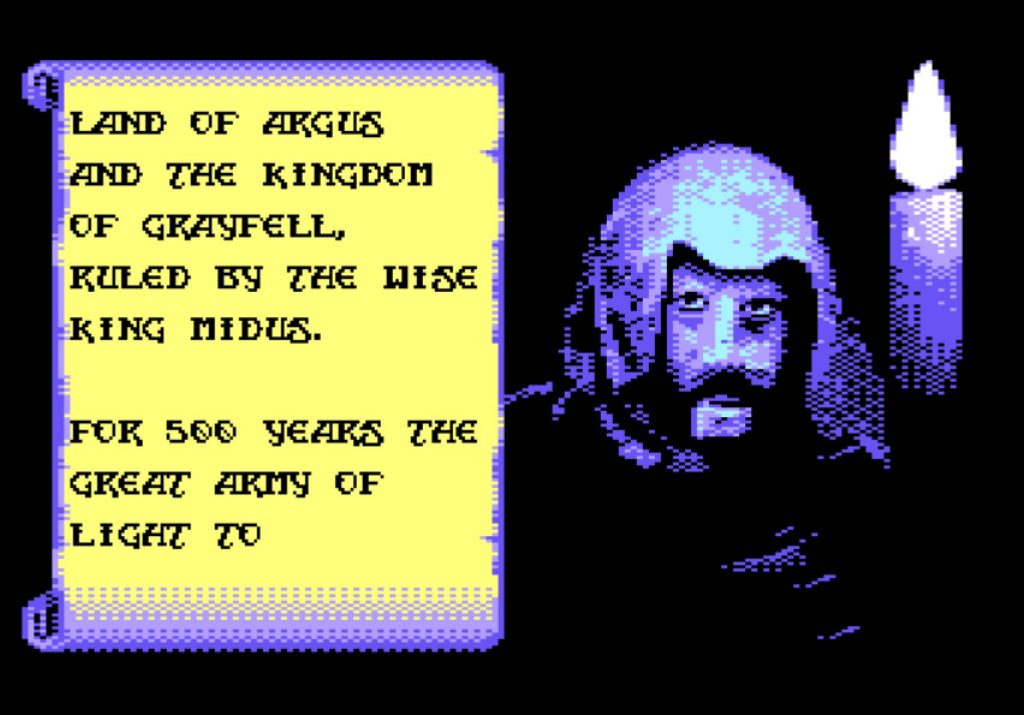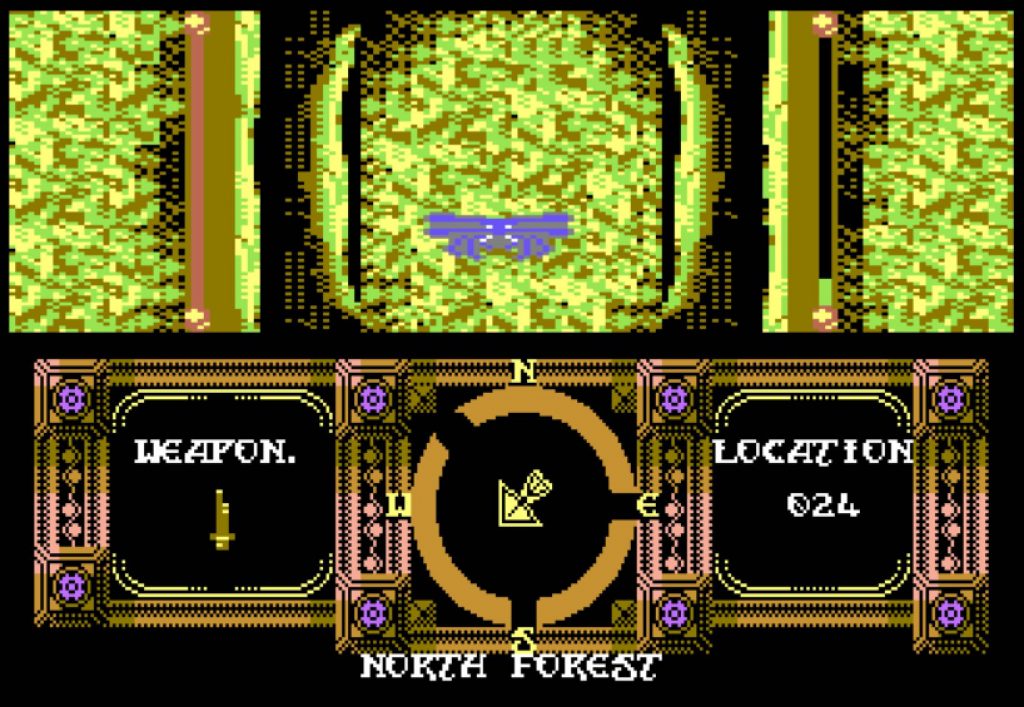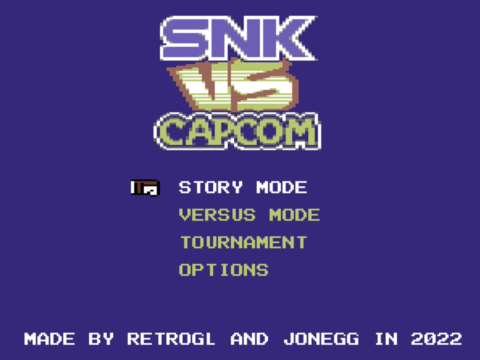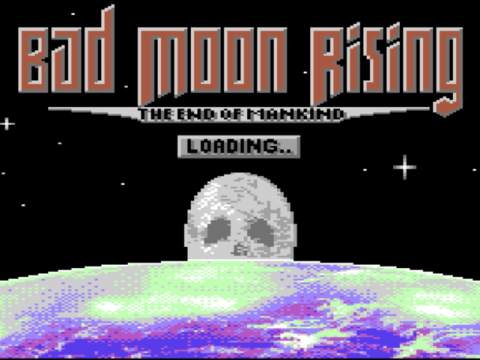-
Production - 75%
75%
-
Fun - 60%
60%
-
Depth - 95%
95%
Summary
Beautiful graphics, diverse locations and enemies will provide many hours of game play but some will find it a little repetitive if you are not a fan of exploration games.
Overall
77%User Review
( votes)It’s really nice to see a Commodore 64 game that is not another shoot ‘em up, platformer or some kind of arcade game. The magnificent team of Volkers, Smila and Cross prepared a pseudo 3D dungeon crawler set in the distant fantasy land of Argus. It is time for a long adventure.
A dungeon crawler game is instantly associated with an RPG genre. Well, this case is different. In this game, there is no role-playing. There are no character stats, no experience points and no leveling up. There is also no story to discover within the temples, forests and caves you will visit. Actually, there is an atmospheric introduction and a conclusion, but that is all. On your journey you will not meet any NPC’s. The chests do not have any scrolls of knowledge hidden inside of them. There is not even a short message confirming your progress. The only tale that the game tells is the one you write by your actions.
Argus fits nicely into an action adventure genre. There are multiple keys and tokens scattered around the world. For some of these items it can take a few moments to figure out how these can be used and more importantly where they fit. You will have to explore more than a thousand rooms in multiple maze-like locations. Usually, a dungeon crawler genre allows player movement in four directions. Argus raises the bar here by adding diagonal movement. Each tile, each location on the map has a possible eight ways to go. Before I started playing I did not understand this idea, but within the game it adds a lot of complexity. In my opinion this kind of level design makes the game almost unplayable without a map. If you like a challenge, you do not need use the one provided by the authors. Take a pen and a piece of paper to draw the labyrinths on your own, but believe me – these mazes can be tricky.
Did I mention, that if you buy a physical edition of the game (even the cheap cassette) you will receive a, beautifully printed double-sided map in the package? Well, now you know. This addition adds a lot to the overall experience. As I did not have the patience to draw each room on my own, I imagined that I have an old scroll helping me on my dangerous journey.

Argus may not be difficult, but it definitely is a demanding game. The before mentioned labyrinths are just the tip of the iceberg. The game is planned in a way that makes you go back and forth through the rooms to find one more key to unlock that particular door on the far side of the world you have visited half an hour ago. The world you travel through is an unfriendly place. There are a lot of different monsters and it’s possible that, right after you leave the north forest you shall start encountering enemies that are immune to your basic weapon. Stay strong and remember that these creatures are randomly populated. If you fail and load the area again, you may remember where the monsters were, but almost certainly you will stumble upon a different breed. There are enough enemy types to keep you interested until the end.
Whenever I am in a room with an enemy my heart beats just a little faster. Is it just a snake that is easily killed with one hit? Has a beholder immune to my current wand attacked me? And if the latter, will I have enough time to change my weapon and kill him before he drains my life from me?
The randomness of the game could be counted as a flaw. During fights you can get half of your health instantly depleted by a series of well-placed attacks. On another encounter, the same creature will barely touch you. The fighting mechanics are pretty simple, but without them the wandering would be boring. If your opponent does not flash when you hit him you can experiment with your weaponry if you have already collected something more than the regular stick. After pulling out the right tool to fight just keep the fire button pressed and hope for the best dice rolls hidden beneath the hits. A word of advice: all the fights can be ignored by just walking by the enemies. Good thing is that if you kill them, they will not respawn. I like to keep my dungeon clean, if you know what I mean.
The disk version of Argus allows the progress of the adventure to be saved. Be careful though, as the save file does not contain the exact state of the game. Progress on the map will be restored after your death, but within the particular location, all the monsters will respawn. It is a good idea to save whenever you enter a new land, but it is not that beneficial at a later time. Keep your health bar high, as death lurks around every corner.
I love the visuals in this game. Each part of the land is recognizably different from the other and the animation is smooth. Even the brief story, presented as a text during the introduction and outro sequence is not just a wall of boring text. Instead, you can see an atmospherically designed scroll with an animated person who looks like he is reading the story to you. The vast world probably took up too much memory as there are no sound effects within the game. For the whole game there is just one tune. It was nice at the beginning of the adventure but after a few hours of playing I had to provide a tune of my own.
All in all, the game provides a lot of fun. I recommend checking this game out just to see the beautifully drawn world. The addition of a printed map to each copy makes it worthy of investing in the tape or disk version. I found the gameplay a bit repetitive at some points, but when I reached the final location I found fresh mechanics. Investing my time to rescue the Starchild turned out to be an entertaining adventure. Take the challenge, I recommend it.
Game Credits
Coding by Achim Volkers
Graphics & design by Trevor ‘Smila’ Storey
Music by Saul Cross
Game Links
Psytronik Software
This review by Lukasz ‘Bob8bit’ Bobrecki was originally published in 8-Bit Annual 2018 and is being republished by RGN with permission. The overall score rating has been adjusted to ensure it is consistent with the overall RGN rating scheme.










